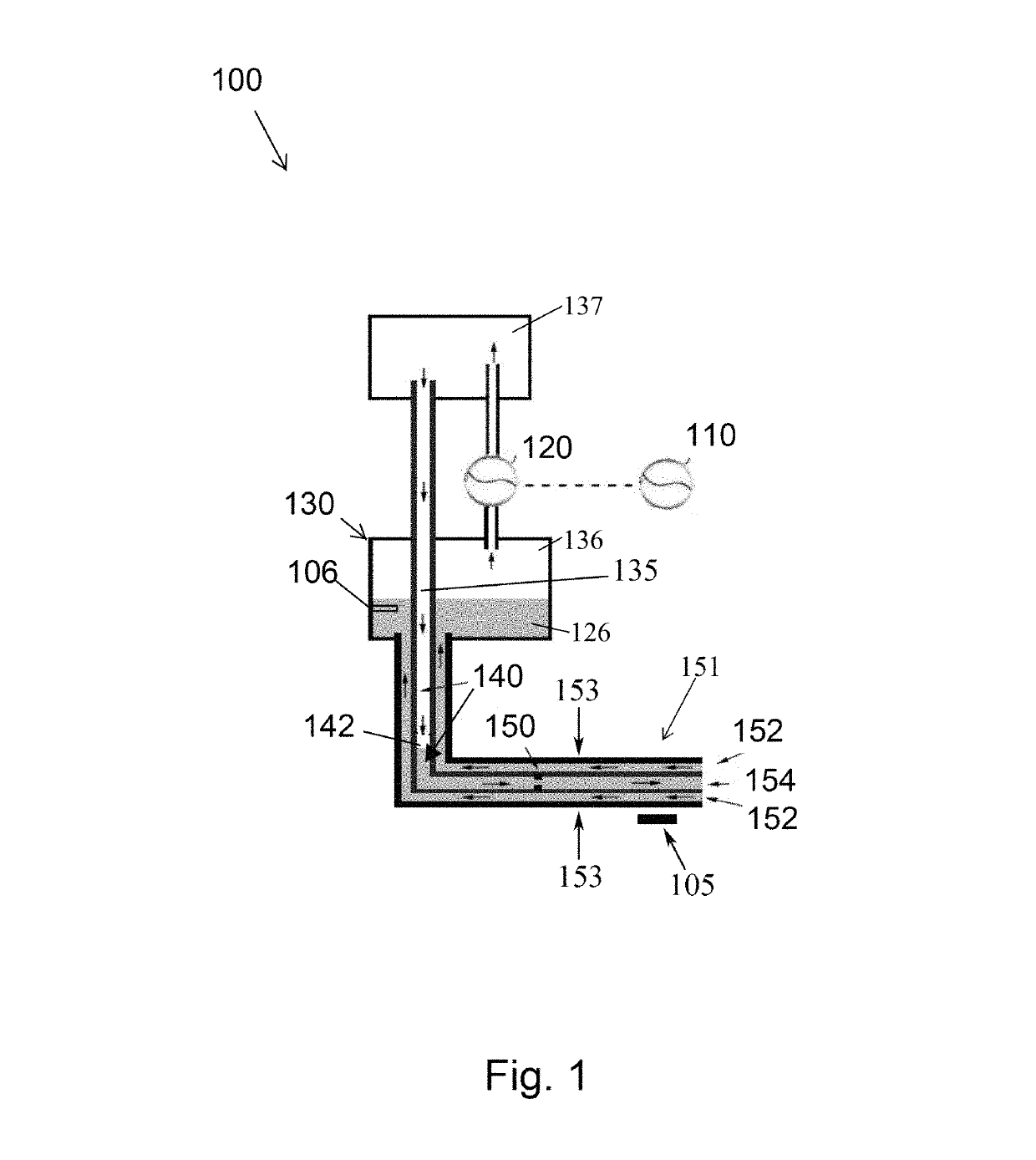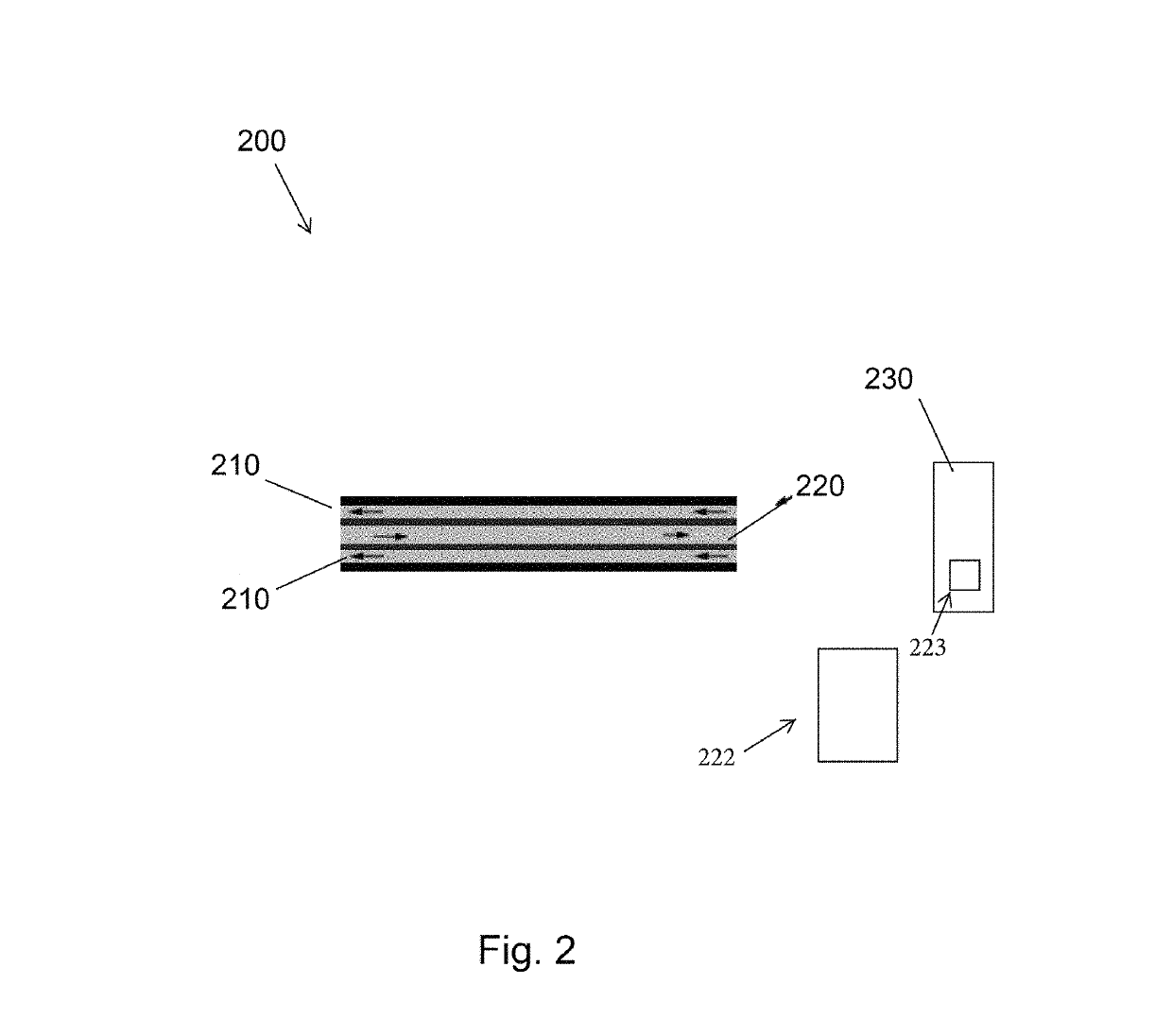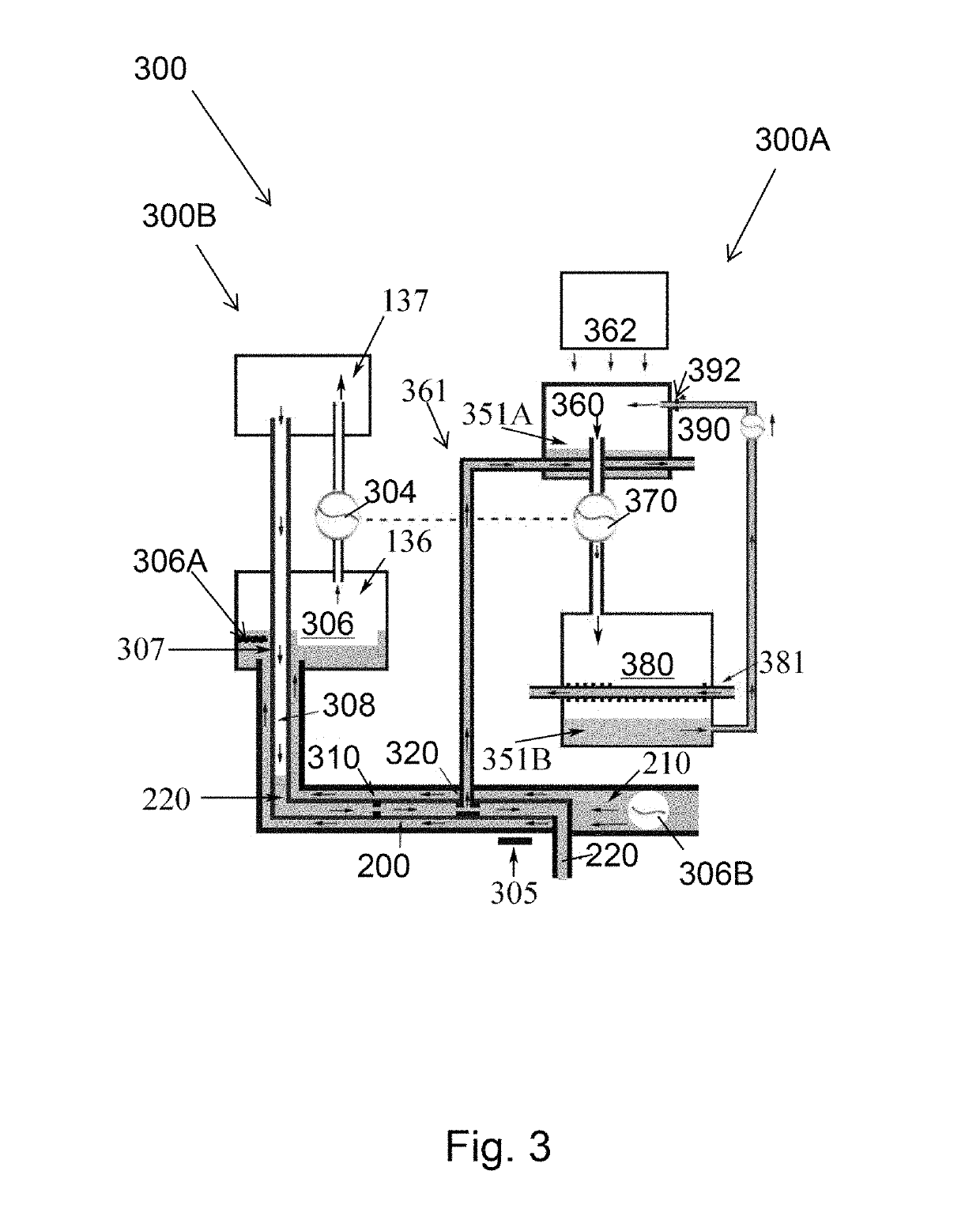Energy recycling and heat exchange systems
- Summary
- Abstract
- Description
- Claims
- Application Information
AI Technical Summary
Benefits of technology
Problems solved by technology
Method used
Image
Examples
example 1
[0062]Chart 1 lists the parameters to be applied to the systems illustrated in FIG. 3 or FIG. 4.
[0063]
CHART 1WaterCondenser 410:Temperature 222 F.°Pressure 18 PSI (denoted by P1)Evaporator 425:Temperature 212 F.°Pressure 14.69 PSI (denotedby P2)R-410ABoiler 360:Temperature 80 F.°Pressure 236 PSI (denoted by P3)Condenser 380:Temperature 70 F.°Pressure 201.5 PSI (denotedby P4)
Utilizing the parameters listed in Chart 1 and if A2=1 unit:
A1(P1−P2)=A2(P3−P4)
Compressive Expansive
A1(18−14.69) PSI=A2(236−201.5) PSI.
(A1)3.31 PSI=34.5 PSI
A1=10.42 sq.in. Equation 1
[0064]Note: A1 and A2 is the area that partitions the difference in pressure acting upon compressor 422 and expander 370 respectively. At equilibrium there is a mechanical advantage of 10.42. If the area of displacement is proportional to the volume of displacement, then for every cubic meter of R410-A vapor displaced by the expander 370, 10.42 cubic meters are displaced by the compressor 422.
[0065]If the compressor displaces 10.42 t...
example 2
Use of Water as the Refrigerant
[0088]Chart 2 lists the parameters to be applied in the system illustrated in FIG. 3 and FIG. 4.
[0089]
CHART 2WaterCondenser 410Temperature 222° F.Pressure 18 PSI (denoted by P1)Evaporator 425Temperature 212° F.Pressure 14.69 PSI (denoted byP2)Boiler 360Temperature 80° F.Pressure .507 PSI (denoted by P3)Condenser 380Temperature 70° F.Pressure .363 PSI (denoted by P4)
[0090]Utilizing the parameters listed in Chart 1 and if A2=1 unit:
[0091]Note: A is the area that partitions and interphases the difference of pressure.
A1(P1−P2)=A2(P3−P4)
Compressive Expansive
A1(18−14.69) PSI=A2(0.507−0.363) PSI.
(A1)3.31 PSI=0.144 PSI
A1=0.043 in. Equation 2:
[0092]At equilibrium there is a mechanical advantage of 0.043.
[0093]For every cubic meter of water vapor displaced by the expander 370, 0.043 cubic meters of water vapor are displaced by the compressor 304 / 422.
[0094]If the compressor 304 / 422 displaces 0.043 times the volume of the expander 370, then:
P1V1=P2V2 or Work1=Wor...
example 3
[0099]Example 3 illustrates that distillation systems produce greater yields with increased temperature of the seawater 426 in evaporator 306 / 425. In this example the temperature of the seawater 426 in evaporator 425 is 281° F. and the temperature of the condenser 410 is 291° F. Chart 3 lists the parameters to be applied in the system illustrated in FIG. 3 and FIG. 4. The parameters for the expansive section 400B remain the same as those listed in chart 1. The parameters for the compressive section 400A have been increased. However, the condenser 410 and evaporator 425 on the compressive section 400A of both chart 1 and chart 3 have a temperature difference of 10° F.
[0100]
CHART 3WaterCondenser 410Temperature 291° F.Pressure 58 PSI (denoted by P1)Evaporator 425Temperature 281° F.Pressure 50 PSI (denoted by P2)R-410AThe Boiler 360Temperature 80° F.Pressure 236 PSI (denoted by P3)Condenser 380Temperature 70° F.Pressure 201.5 PSI (denoted byP4)
[0101]Utilizing the parameters listed in Ch...
PUM
 Login to View More
Login to View More Abstract
Description
Claims
Application Information
 Login to View More
Login to View More - R&D
- Intellectual Property
- Life Sciences
- Materials
- Tech Scout
- Unparalleled Data Quality
- Higher Quality Content
- 60% Fewer Hallucinations
Browse by: Latest US Patents, China's latest patents, Technical Efficacy Thesaurus, Application Domain, Technology Topic, Popular Technical Reports.
© 2025 PatSnap. All rights reserved.Legal|Privacy policy|Modern Slavery Act Transparency Statement|Sitemap|About US| Contact US: help@patsnap.com



